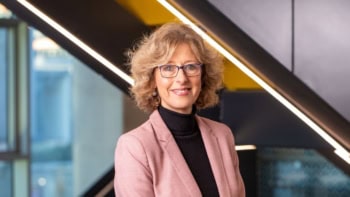Placing scientific laboratories in their local communities poses special challenges, says Robert P Crease

In 1983 officials from San Diego City Council in California voted to install high-pressure sodium (HPS) streetlights that emitted a full spectrum of visible light. The existing, low-pressure sodium (LPS) streetlights gave off only a narrow, yellowish band, and it was hoped that the HPS lights would brighten streets and reduce crime. Makes sense, right?
However, astronomers at the 200-inch Hale telescope on Palomar Mountain, about 100 km away, were appalled, saying light pollution would blind their instrument. While they could readily filter out the narrow band of wavelengths from LPS lights, this was impossible with HPS lamps. “It would have the same effect as taking a sledgehammer and knocking out half of it,” complained one scientist who studied quasars, fearing it was “the beginning of the end”.

Reclaiming the stars
One member of San Diego’s council defended its action, claiming that local citizens didn’t like the existing lights and feared for their safety. “All we’re doing is responding to our constituents who are telling us that they don’t want yellow lights,” the council member said. “I’m for technology. But I’m also for the people of San Diego.”
In 1984 the council reversed its decision and approved the LPS lights. Delighted astronomers even named an asteroid that had recently been discovered “3043 San Diego”. But the battle continued to rage for nearly a decade. Some LPS opponents insisted that if the astronomers really wanted the telescope they should move it elsewhere. Others derided the telescope’s value.
“Little that is done in astronomy anywhere is of any practical importance,” huffed one writer to the San Diego Union-Tribune. Another said there was “no reason whatever to inconvenience literally millions of people in Southern California so some fool astronomer can play with this particular toy”. A third demanded that San Diego citizens’ safety be put ahead of the desire to “see Venus on a cloudy night”.
Astronomers assumed they’d prevail so long as they presented their case ‘factually and logically’
Other supporters of the bright lights were annoyed by how they felt they were being treated, and angered that they were being dismissed as “provincial and small-town”. At one city-council meeting they were labelled “flat-Earthers”. Eventually, in 1993, the council did a second U-turn and decided to install HPS lamps in high-crime areas – and later in other parts of the city too.
Disputed issues
Palomar astronomers were forced to cope with increasing light pollution by observing more in the infrared and by looking to the skies to within just 45 degrees of the zenith. Recounting the dispute in his 2001 book Asteroids: a History, the aerospace historian Curtis Peebles said it was tempting to think “that the political and civic leaders in one of California’s largest cities could not really do and say these things…but they did.” The asteroid, though, retained its name.

The American reactor that was closed by fake news
Astronomers assumed they’d prevail so long as they presented their case “factually and logically”, as Peebles put it. But facts and logic were not the only motivating concerns of the San Diego citizens. Some thought that their safety should come ahead of the telescope’s operation, others were suspicious of the instrument’s overall value compared to other important values, and still others were annoyed by the way their concerns were dismissed. As Peebles wrote, the scientists simply “never understood the people they were fighting”.
The San Diego events sound parochial, but Peebles concluded they “mirror those in the larger world”. I’ve covered a few, such as the time when the Brookhaven National Laboratory was forced to shut its research reactor in 1999 after an insignificant leak of tritium ignited anti-nuclear protests and fed political ambitions. There was also the closing of the US National Tritium Labelling Facility at the Lawrence Berkeley National Laboratory, following protests against tritium emissions that were within limits set by the US Environmental Protection Agency.
A lab’s purpose is harder to explain and justify than for more ordinary institutions
Many local institutions, such as schools, post offices or fire stations, fit into their surrounding communities in three distinct ways. First, they have a physical place, sharing air, water, streets, electricity and other services with neighbours. Second, they serve easily recognized purposes, which neighbours might feel they could not easily do without. Finally, such institutions have “personalities”, for their behaviour over time appears as more or less reliable, caring and trustworthy.
Laboratories are different. They, too, have physical places. But because they have sensitive scientific instruments, it can make labs vulnerable to activities in other nearby places. When Palomar, for example, was being planned nearly a century ago, it was sited in a then-remote location on a mountain top. But population growth and technological developments effectively shrank distances to places like San Diego, leading to intrusive interactions.
A lab’s purpose, too, is harder to explain and justify than for more ordinary institutions. Its products and services are not primarily for neighbours but the wider scientific community and can seem to be of little practical value – as the Palomar telescope did to some. Finally, a lab “lives in” a community, which means its conduct and those of its staff can be investigated and commented on by politicians and the media.
The critical point
Ensuring a lab’s place in a community therefore poses special challenges. For the Palomar astronomers, the stars seemed to be a straight shot – or as straight as the geometry of spacetime will allow. Contacting San Diego involved a more complex trajectory with several different paths. Unless these paths are identified and addressed, the events at Palomar are likely to mirror others.



